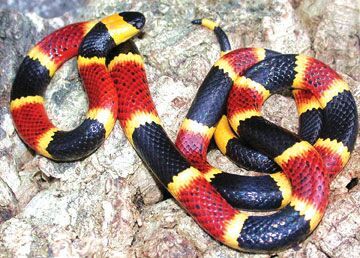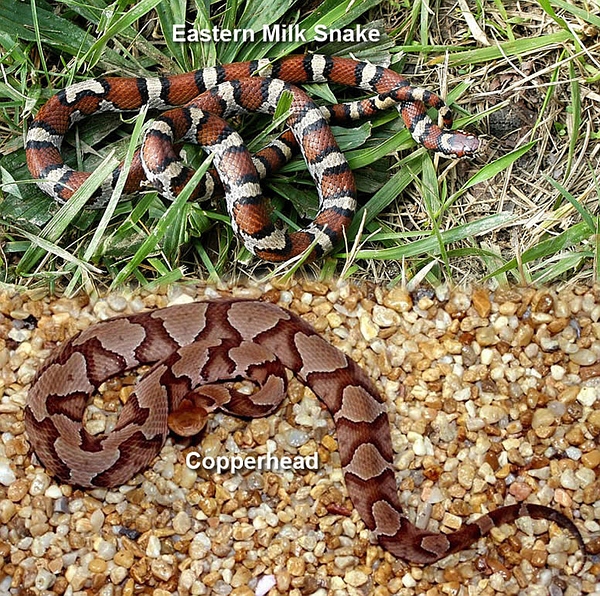

" Of all the childhood rhymes we've grown up learning, this one might be high on the list of ones to remember if you live in coral snake country. “G-Bartolotti SK” By Glenn Bartolotti – Own work (CC BY-SA 3."Red touch yellow, kills a fellow red touch black, venom lack. “Coral snake close-up” By Elvissa – (CC BY-SA 2.0) via Commons WikimediaĢ.

Coral snakes are venomous but king snakes are not. The key difference between coral and king snake is their colouring patterns. On coral snakes, yellow and red bands touch each other, while on kingsnakes, black bands always separate the yellow and red bands. Coral snakes are more diversified than king snakes. In addition, king snakes are immune to snake venom and prefer to hunt down and eat the other snakes but not coral snakes. However, sometimes coral snakes do not have bands at all, but king snakes always have bands.Īnother difference between coral and king snake is that king snakes are more powerful than coral snakes. Mostly, colouration patterns look alike in both snakes but, in North America, coral snakes have red bands inside yellow bands while king snakes have red bands inside black bands. King snakes are larger than coral snakes. Moreover, coral snakes are venomous but king snakes are not. What is the Difference Between Coral and King Snake?Ĭoral snakes are elapids while king snakes are colubrids. However, since their remarkable ability to go against venomous snakes, it may not be a bad idea to keep a king snake in your backyard if it would not flee. They have been kept as pets in some places, but they are docile sometimes against the rodent bites.
MILKSNAKE VS CORAL SNALE SKIN
However, their scales and skin are not very thick and susceptible for piercing by bites of others, but they are immune to venom and infections. King snakes are large, and they are gifted with the ability of contracting the prey after the capture to disable it. King snakes are mostly banded with red, yellow, white, and black coloured scales. The name king snake is given to them due to their remarkable ability to make impossible things possible by developing immunity against snake venom.

Their ability to tolerate the venom of highly poisonous rattlesnakes is remarkable. King snakes are non-venomous, but they can prey on anyone in their path including venomous snakes. However, this genus includes milk snakes and some others as well, but the number of king snakes species is about 10 with more than 25 subspecies. King snakes are a group of snakes classified in the Genus: Lampropeltis of the Family: Colubridae. Small reptiles including snakes, frogs, birds, and small rodents are the mostly favoured prey items for coral snakes. Coral snakes are not very aggressive, but they hold prey while biting the victim. It is interesting to notice that some are largely distributed in the leaf litter of the forest floor. Corals snakes have a variety of behaviours and their habitats are variable as well some coral snakes prefer to live in aquatic habitats while some are fossorial.

It is very important to notice that some highly venomous snakes have different banding patterns sometimes they have no coloured bands. Since coral snakes are venomous and their venom can kill anyone in their path, other non-venomous snakes such as milk snakes and king snakes have started to mimic coral snakes. On coral snakes native to the US, the yellow and red bands touch each other. They have mostly black, red, white, and yellow bands or rings. One of the notable characteristics of coral snakes is that their colouration pattern. The new world coral snakes are more diversified with 65 species described under the three other genera. There are 11 species of old world coral snakes and all of them belong to Calliophis species. Their geographical distribution pattern shows a definite grouping into two major types known as old world and new world. Side by Side Comparison – Coral vs King Snake in Tabular FormĬoral snakes are members of the venomous group of Family Elapidae and have been described under four genera known as Leptomicrurus, Micruroides, Micrurus, and Calliophis. The colouring pattern in coral snakes elsewhere in the world can be quite different. Although both these types of snakes have similar colourings, these two belong to largely distinct groups of snakes. However, note that this rule is only applicable to coral snakes native to North America. On coral snakes, yellow and red bands touch each other, while on kingsnakes, black bands always separate the yellow and red bands. The key difference between coral and king snake is their colouring patterns.


 0 kommentar(er)
0 kommentar(er)
